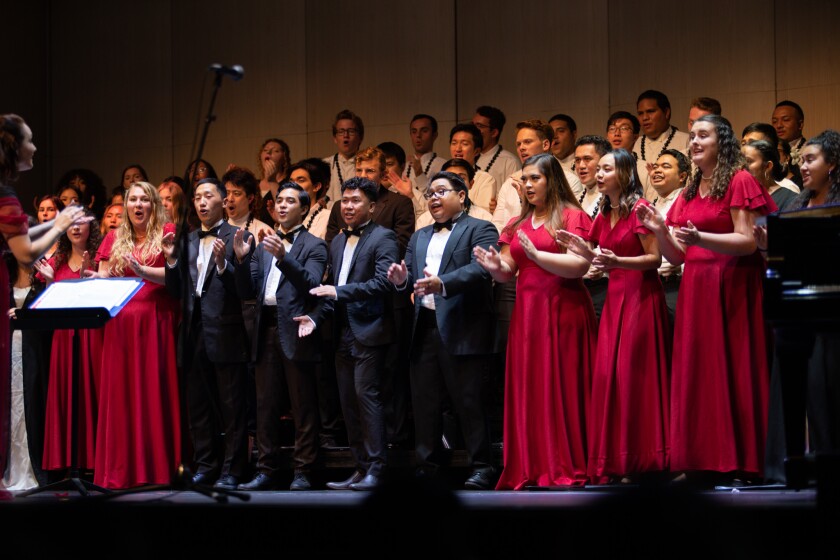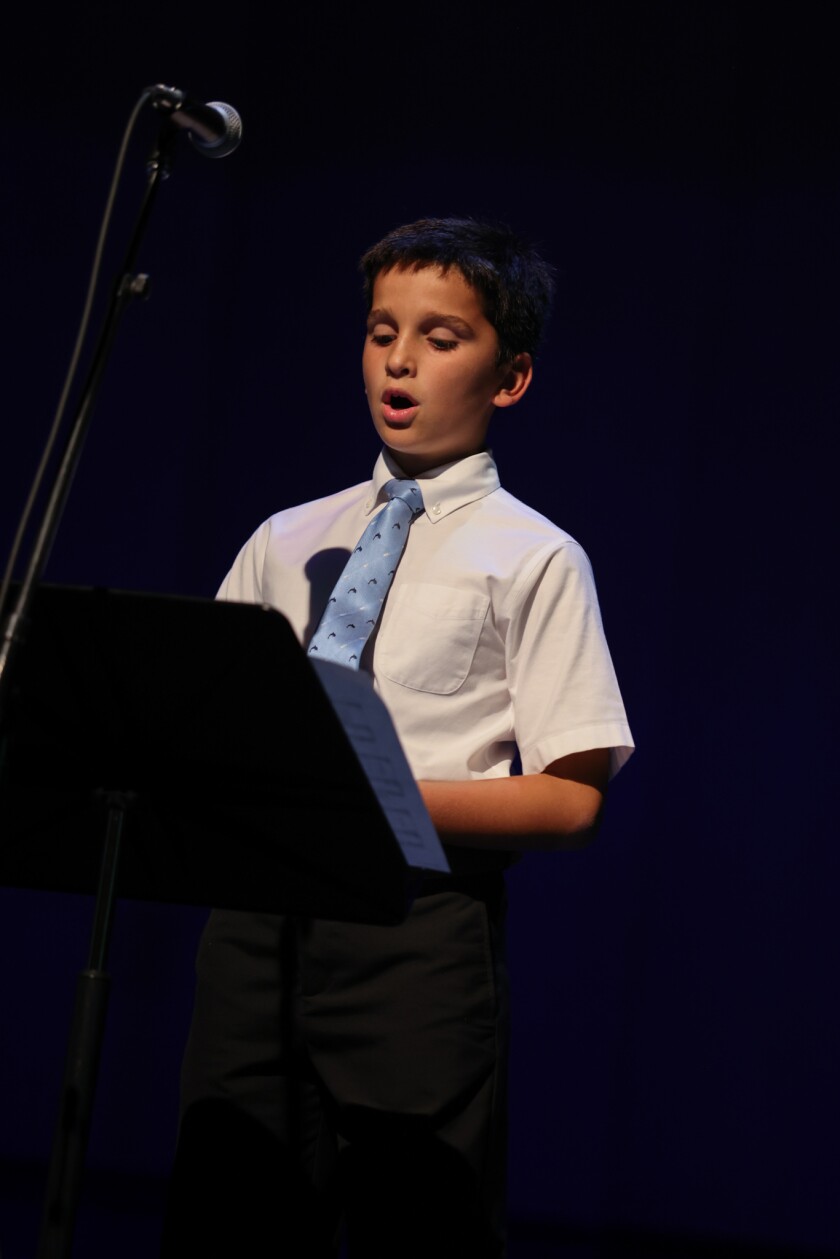BYU–Hawaii choirs take their audience “A Puni Ka Honua,” Around the World in a night

The very last choir concert for Winter Semester 2022, A Puni Ka Honua, Around the World, highlighted non-American music traditions covering 12 different countries. The Ho'olōkahi Chamber Choir, Seasider Singers, faculty members, special solo singers and dancers, technicians, and ushers collaborated to produce the musical event.
“We are lucky to exist here in such a culturally rich space,” said Dr. Erica Glenn, visiting assistant professor of choral activities and voice. She explained students studied performance practices for those musical traditions, “often learning directly from fellow students who are culture bearers.”
Leaving behind the emotions from ending the semester, the combined choir and audience all stood up and finished the program with “Aloha Hawai’i,” while holding hands together.
Carter Broschinsky, a freshman majoring in political science from Queen Creek, Arizona, who performed with the Seasider Singers, said, “I remember this evening during the last song when everybody’s hands went up. It was a magical moment.”
The choir sang “Fire,” written by Katerina Gimon, representing Canadian musicians. The piece delivered no words and allowed singers to express energy and lively sounds by stomping their hands and feet. The concert presented various cultures ranging from a Samoan nursery song, South African freedom marching song called “Siyahamba,” “I Still Call Australia Home,” the Ukrainian national anthem and pieces from Estonia, the Philippines, the Republic of Cameroon, East Africa and India.

The concert started with a choir singing “Me-Na-Ri” composed by Korean musician Hyo-Won Woo. The choir utilized the whole area to perform this special music on the stage and in the aisles and backstage, with choir members moving places throughout the piece. The dissonance of this piece heightened the tension of the opening.
Two choir teams and overflowing audiences packed the auditorium. Two projectors shot the sidewalls of the auditorium, and the screen introduced each piece of the performance through introductory clips and original performance recordings.
Two special solo performers presented pieces from the Philippines and France. Soprano singer, Mia Malit-Cruz, majoring in vocal performance, performed one of her research recital pieces, “Malungkot ang Maya,” representing the history of the Philippines fighting against colonialization.
Nawai Kauwe, 10-year-old son of President John S.K. Kauwe III and Monica Kauwe, performed “Pie Jesu,” representing a piece of France typically sung by a boy soprano. This singing was his very first public solo performance.

Another song was a Korean song called “Arirang,” which junior Accalia Stancliffe, majoring in visual arts from Forthworth, Texas, who performed with the Seasider Singers, said she enjoyed practicing. Stancliffe added the piece was difficult primarily because of how high she had to sing.
Haeri Oh, a senior majoring in intercultural peacebuilding and cultural anthropology from South Korea, said, “As a Korean, I was really surprised that they sang Arirang so well. The pronunciation was on point.” She complimented the choir on how well they delivered Korean identity in the performance.
The concert recognized graduating seniors, students leaving for their missions, and Dr. Melissa Walker Glenn, who will leave for spring semester and the summer to pursue her Fulbright research and humanitarian work in Poland.
